how graphic design skills can feel like a ‘superpower’ with vanessa low
Plus take a peek inside her colourful creative workspace.
 When she isn’t whipping up schmick brand logos and social media posts for her day job as a graphic designer, you’ll find Vanessa Low making candles, sourcing vintage glass homewares and sniffing out inspiration at Asian grocery stores. We spoke to the Sydney-based creative and Shillington graduate about her eclectic career, finding beauty in hard rubbish, and how studying graphic design might give you superpowers.
When she isn’t whipping up schmick brand logos and social media posts for her day job as a graphic designer, you’ll find Vanessa Low making candles, sourcing vintage glass homewares and sniffing out inspiration at Asian grocery stores. We spoke to the Sydney-based creative and Shillington graduate about her eclectic career, finding beauty in hard rubbish, and how studying graphic design might give you superpowers. 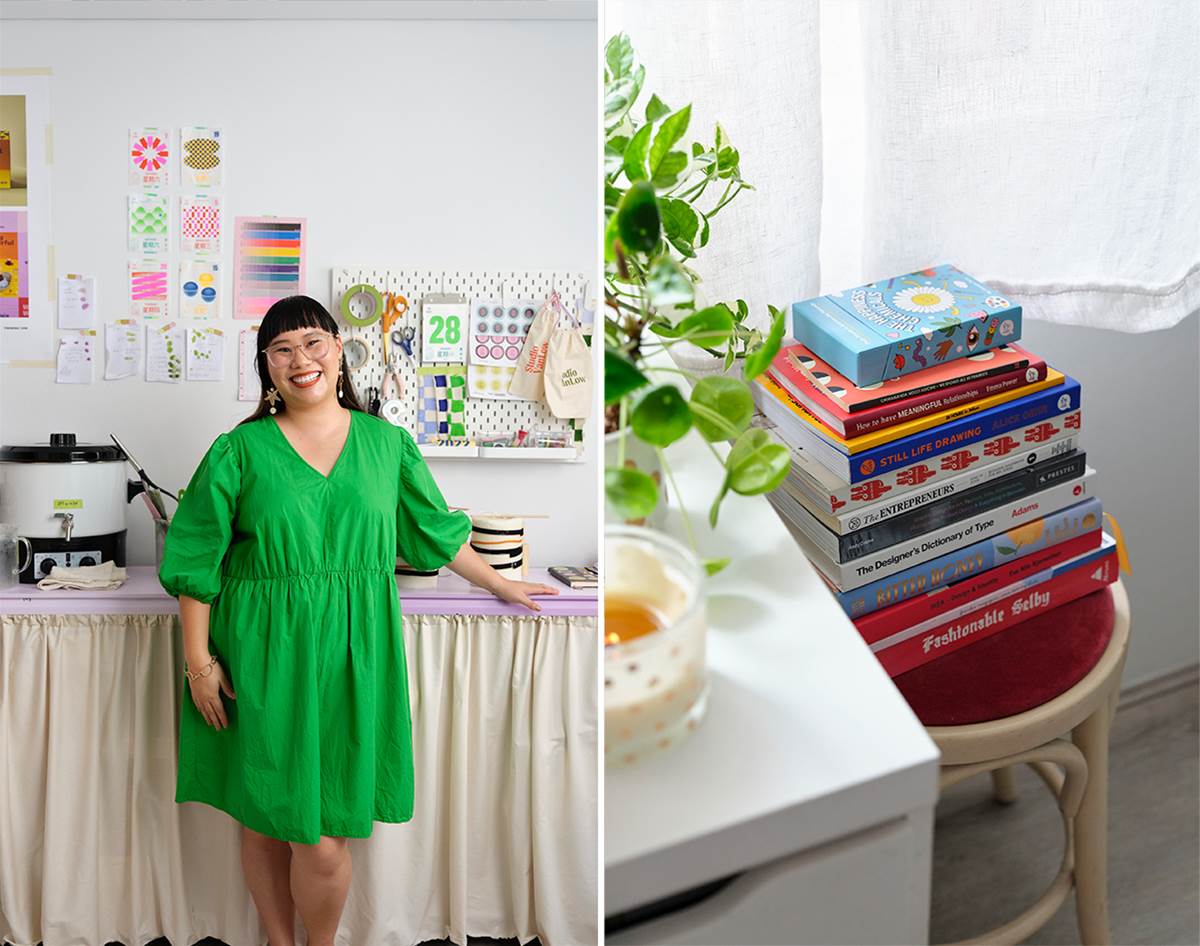 Hi Vanessa! Tell us a bit about what you do. I describe myself as an all-round creative because I’m not particularly attached to one medium. Whether it’s photography, design, writing or making, I go where my ideas take me! Day-to-day, I work at content marketing agency Heads & Tales as a digital content creator. I have a freelance practice, too, where I help brands tell their stories online. I also make candles and sell pre-loved homewares via my online shop. It sounds like I’m all over the place, but it’s really just different forms of creative expression.
Hi Vanessa! Tell us a bit about what you do. I describe myself as an all-round creative because I’m not particularly attached to one medium. Whether it’s photography, design, writing or making, I go where my ideas take me! Day-to-day, I work at content marketing agency Heads & Tales as a digital content creator. I have a freelance practice, too, where I help brands tell their stories online. I also make candles and sell pre-loved homewares via my online shop. It sounds like I’m all over the place, but it’s really just different forms of creative expression.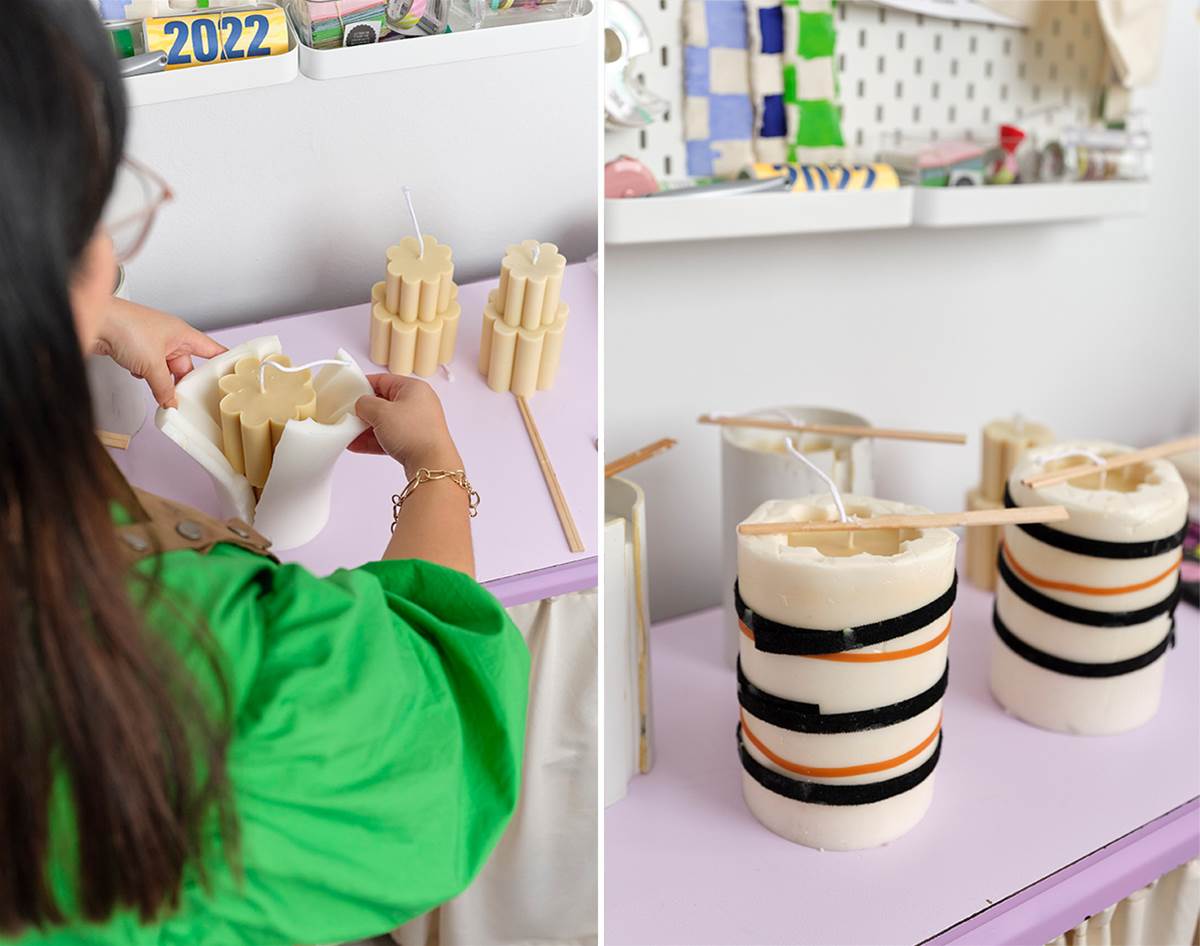 What’s your artistic style, and what inspires it? I often say it’s eclectic, because I don’t really fit into one pigeonhole. I always try to inject colour and a bit of playfulness into everything I do, but it’s refined playfulness. For inspiration, going to a gallery is the absolute best. I especially love Asian grocery stores because they’re kind of like galleries for product design.
What’s your artistic style, and what inspires it? I often say it’s eclectic, because I don’t really fit into one pigeonhole. I always try to inject colour and a bit of playfulness into everything I do, but it’s refined playfulness. For inspiration, going to a gallery is the absolute best. I especially love Asian grocery stores because they’re kind of like galleries for product design.
Why did you want to pursue a creative career? It was never a question; I just have this compulsion to make things, and I see art everywhere. The other day, I was walking by some hard rubbish that stopped me in my tracks because it was this lovely blue and cream colour combination. Even if I worked in, say, finance, I’d still come home and do something creative.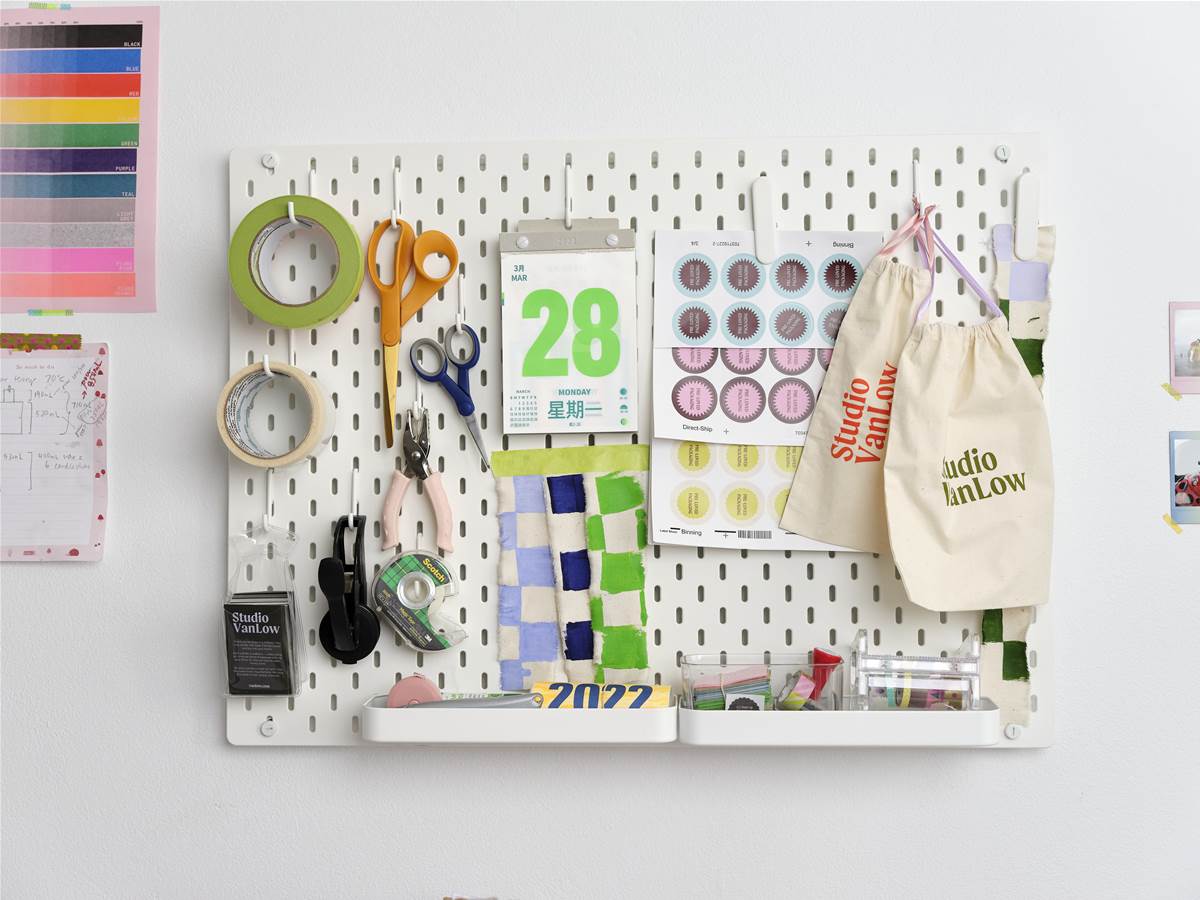 How did you get into graphic design? I studied a Bachelor of Art Theory at UNSW because I love talking about art, so I became very good at writing academically about it. I worked in museums for a while, doing admin and research for exhibitions. I realised, though, I wasn’t creating anything myself. I had so many ideas, but I didn’t have the hard skills or formal language to bring them to life. I asked my coworkers in the design department at the museum how I could get the practical skills to do what they did. A few of them were teachers at Shillington, and that’s where I got the idea to start their part-time, nine-month graphic design course.
How did you get into graphic design? I studied a Bachelor of Art Theory at UNSW because I love talking about art, so I became very good at writing academically about it. I worked in museums for a while, doing admin and research for exhibitions. I realised, though, I wasn’t creating anything myself. I had so many ideas, but I didn’t have the hard skills or formal language to bring them to life. I asked my coworkers in the design department at the museum how I could get the practical skills to do what they did. A few of them were teachers at Shillington, and that’s where I got the idea to start their part-time, nine-month graphic design course.
How was your experience at Shillington different from university? It was the start of my career as a creative maker, and not just a creative thinker and critic. My skills were suddenly applicable in every industry, so people were approaching me about work and not the other way around. Before I even finished the course, people started asking me to design their logos. I could take anyone’s brand and make it interesting using colour, hierarchy, animation or digital storytelling. It felt like I had this new superpower. 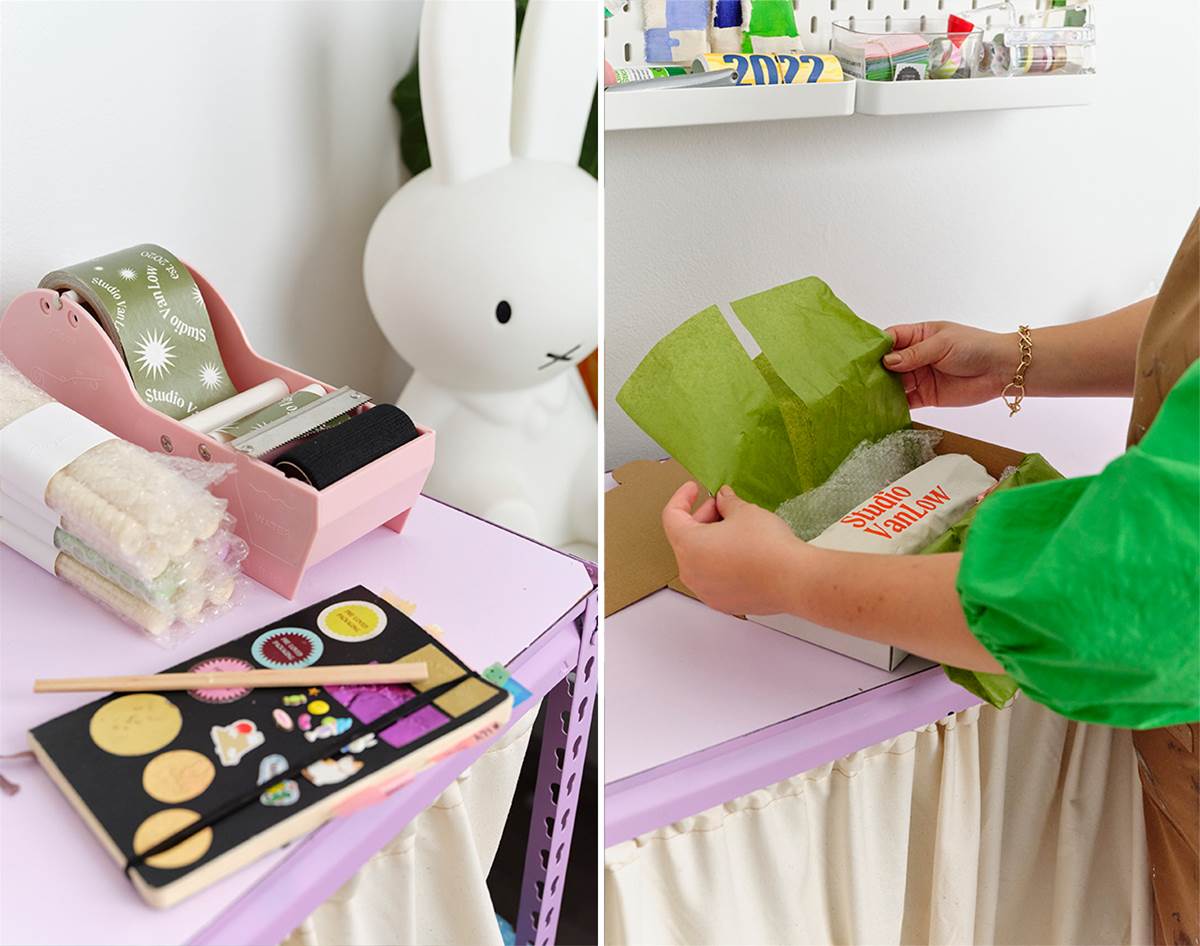 What’s the best thing you learnt at Shillington? Learning how to communicate my ideas to others. It’s one thing to be a good designer, but you’re not working in a vacuum. Being able to walk people through your idea — and showing them how it’s impactful — is so useful when you’re responding to briefs.
What’s the best thing you learnt at Shillington? Learning how to communicate my ideas to others. It’s one thing to be a good designer, but you’re not working in a vacuum. Being able to walk people through your idea — and showing them how it’s impactful — is so useful when you’re responding to briefs.
Tell us about a project that made you feel proud. I created social media assets to promote the launch of Welcome to Your Boobs, a book by Yumi Stynes and Dr Melissa Kang. It’s all about helping people learn about their bodies. I’m proud of it because my design skills made such an important message accessible, sharable and appealing for people across different media.
I’m also proud of my candle business, because the process taught me so many skills — everything from candle mixing to the ethics of different waxes to e-commerce. Plus, seeing an object you’ve made in someone else’s home is just really special.  What advice do you have for aspiring designers? Think about your individual style and the unique perspective you bring to design. Study is a great time to work that out, because you’ll come into contact with so many different ideas. People are ultimately drawn to what makes you different, not just your skills.
What advice do you have for aspiring designers? Think about your individual style and the unique perspective you bring to design. Study is a great time to work that out, because you’ll come into contact with so many different ideas. People are ultimately drawn to what makes you different, not just your skills.
This inspiring chat was produced in partnership with Shillington. If you’re keen on studying graphic design (either three months full-time or nine months part-time), have a squiz at Shillington’s on-campus or online course options. 

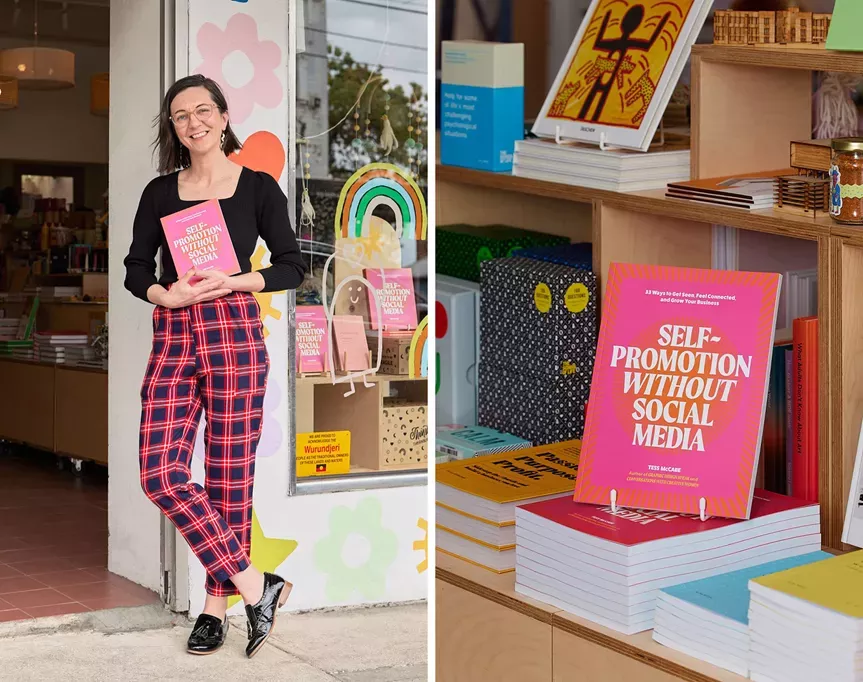
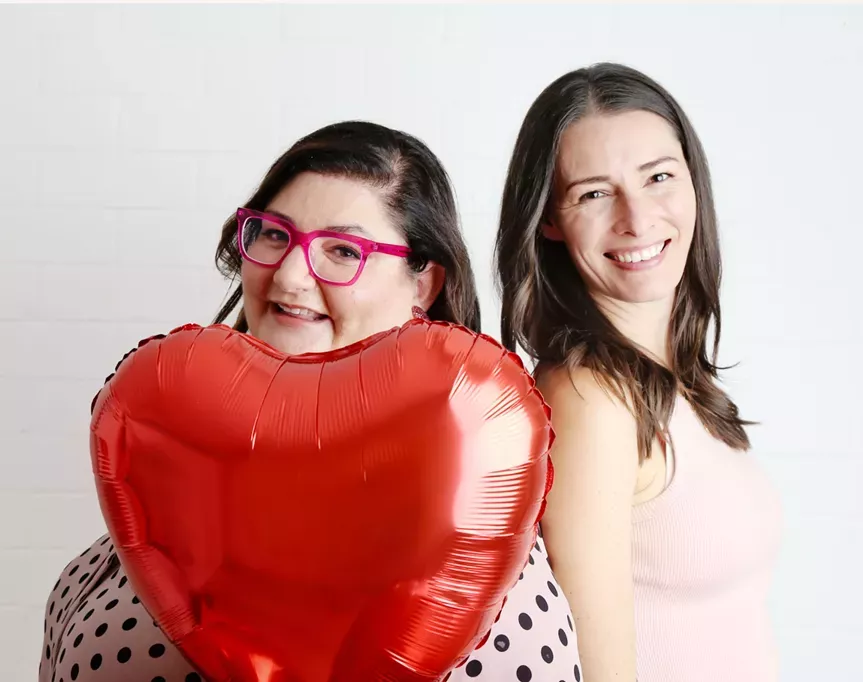
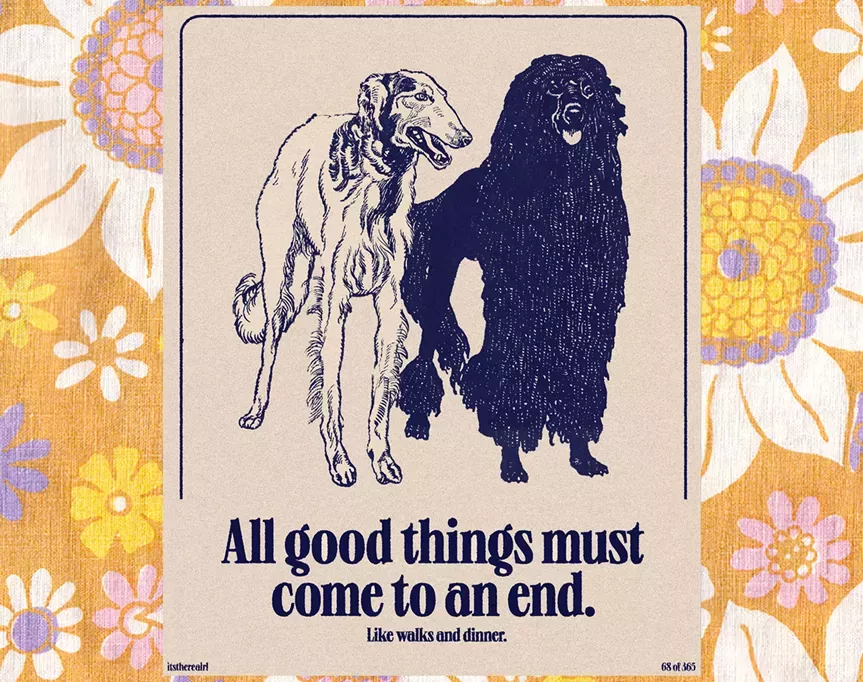










.jpg&q=80&w=316&c=1&s=1)













.jpg&q=80&w=316&c=1&s=1)










